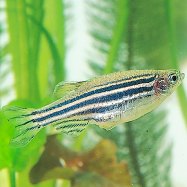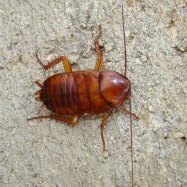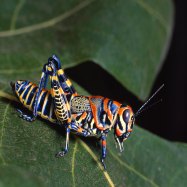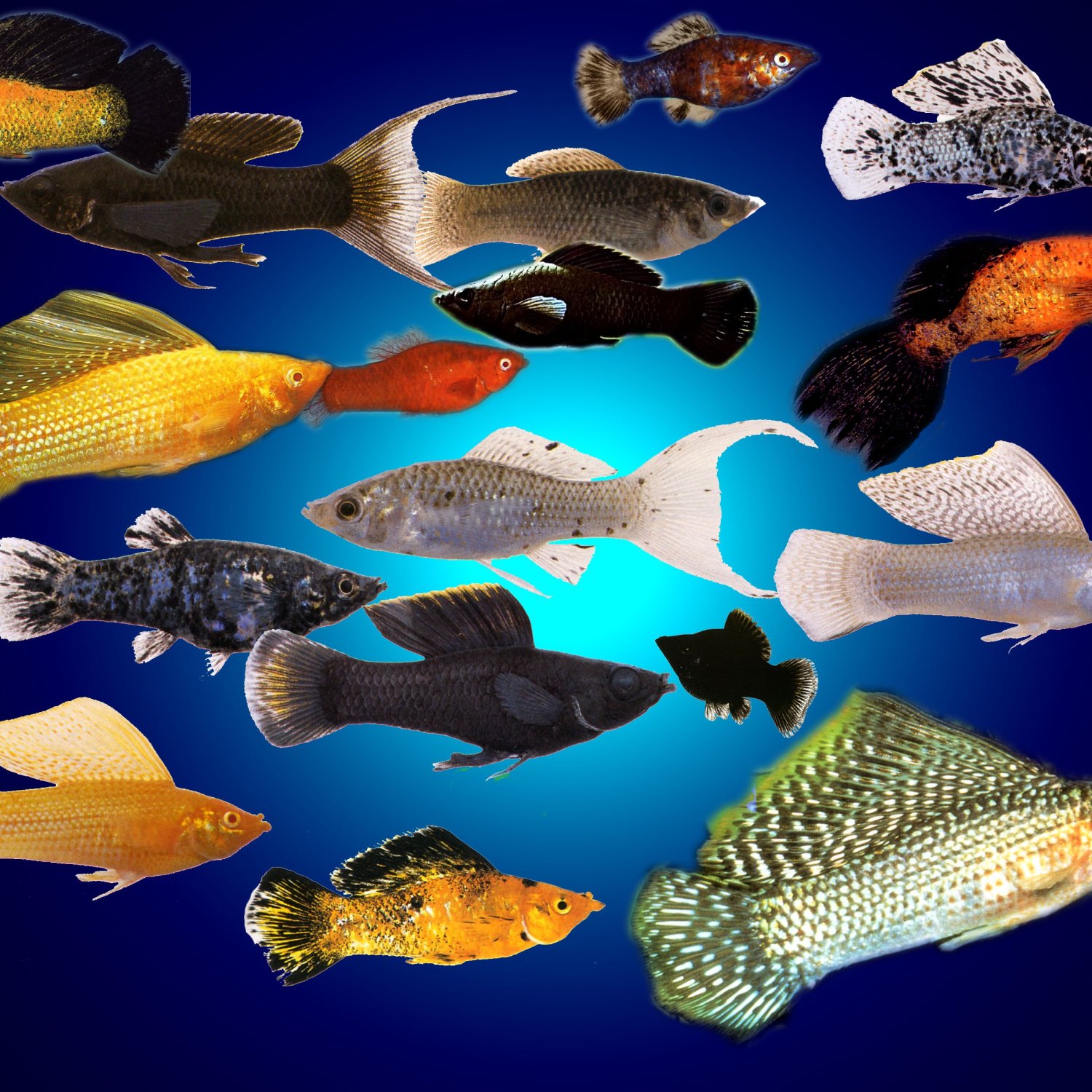
Molly
Up to 3-4 inches (7-10 cm)
Molly fish are small, slim, and love freshwater habitats like rivers and ponds. They belong to the Poeciliidae family and can grow up to 3-4 inches in length. Their body shape is elongated with a triangular peduncle. These colorful and active fish are great additions to any freshwater aquarium! #MollyFish #FreshwaterAquarium #Poeciliidae
Animal Details Summary:
Common Name: Molly
Kingdom: Animalia
Habitat: Freshwater
The Marvelous Molly: A Dive into the World of the Poecilia sphenops
As pet lovers, we all have our favorite furry or feathered companions. However, have you ever considered adding a scaly friend to your family? Perhaps a freshwater fish that is not only beautiful but also intelligent and filled with vibrant personality. If so, then allow me to introduce you to Molly, the Poecilia sphenops.Molly, also known as the Poecilia sphenops, is a freshwater fish that belongs to the genus Poecilia, which is native to the Central and South American regions Molly. These beautiful creatures have been popularly kept as pets for centuries, and there's no surprise as to why. With their striking coloration and lively demeanor, Molly is a true gem in the realm of aquatic animals.
Scientific Classification: Dive into Molly's Family Tree
Before we dive deeper into the world of Molly, let's take a look at her scientific classification. Scientifically, Molly is known as Poecilia sphenops and belongs to the Animalia kingdom, which includes all animals on Earth. It's in the Phylum of Chordata, which is characterized by the presence of a bony or cartilaginous spinal cord. Additionally, Molly is part of the Actinopterygii class, which represents the largest group of vertebrates with over 30,000 living species. Molly belongs to the order Cyprinodontiformes, which is known for its diverse array of fishes, including livebearers like the Molly. Lastly, Molly is part of the family Poeciliidae, which includes popular aquarium species such as guppies and swordtails.Habitat and Natural Distribution: Discovering Molly's Home
Molly fishes are commonly found in rivers, ponds, and other freshwater habitats in Central and South America Mountain Beaver. They originate from Mexico, specifically the Atlantic slopes of Veracruz. Due to their ability to adapt to various aquatic environments, these beautiful fishes are also commonly found in parts of Florida, Hawaii, and other regions worldwide as pets.Feeding Behavior: A Balanced Omnivorous Diet
Molly fishes are omnivores, which means they feed on a variety of food items, including plants, algae, and small organisms such as insects and crustaceans. In their natural habitat, they play a crucial role in keeping the aquatic ecosystem in balance. As a pet, Molly is not a fussy eater and will happily accept a well-rounded diet of flake or pellet food, live or frozen food, and even vegetables like peas, lettuce, and zucchini. Providing a varied and balanced diet is essential to ensure their health and well-being.Appearance: A Colorful Masterpiece
One of the most captivating features of Molly fishes is their striking coloration. They are available in a wide range of vibrant colors, from black, gold, and yellow to marbled, and even metallic shades. The color patterns and intensity may vary based on gender, maturity, and environmental conditions.Interestingly, Molly fishes can change their coloration in response to environmental stimuli. When excited or ready to mate, males may display a darker and more intense color, while females may show a brighter and more vibrant appearance. This ability to adapt and change color makes them truly unique and captivating.
Body Shape and Size: Slim and Graceful
Molly fishes have a slim and elongated body with a triangular peduncle, making them excellent swimmers. They have a mouth on their underside, surrounded by a pair of barbels that help them navigate and search for food in areas with low visibility. On average, they can grow up to 3-4 inches (7-10 cm) in length, with males being slightly shorter and wider than females.The Vivacious Personality of Molly
Apart from their stunning physical appearance, Molly fishes are also known for their lively and social personalities. They have a reputation for being highly interactive and intelligent pets, making them a favorite among aquarium enthusiasts. They enjoy the company of their own kind and may become stressed if kept alone. It's recommended to keep at least three to four mollies in a tank, preferably with a 2 to 1 female to male ratio.Molly fishes are also known for their ability to recognize their owners and even respond to their voices, making them a great addition to any household. They are also known to be playful and curious, often exploring their tank and interacting with various objects in their habitat. This makes them incredibly entertaining pets to observe and interact with.
Aquarium Requirements: Creating the Perfect Home for Molly
Keeping Molly fishes as pets is relatively easy, and they don't require any specialized care. However, it's essential to create a suitable environment for them to thrive. A tank size of at least 20 gallons is recommended for a small group of mollies. The tank should have a variety of hiding places, including plants, rocks, and driftwood, to mimic their natural habitat. They also prefer a slightly alkaline environment with a pH level between 7.5-8.5 and a temperature range of 75-80°F (24-27°C).Breeding: Witnessing the Miracle of Life
As livebearers, Molly fishes give birth to live young, and their breeding process is quite fascinating. Once a male and female are introduced, the male will try to impress the female by displaying his vibrant color and finage. If the female is ready to mate, she will allow the male to fertilize her eggs through the process of internal fertilization. After a gestation period of 4-6 weeks, the female will give birth to a brood of fry, which can range from 20-100 young, depending on the size and health of the female.Conservation Status: Molly in the Wild
In their natural habitat, Molly fishes are not considered a threatened species. However, due to their popularity as a pet, they have been extensively bred, leading to a decline in the genetic diversity of the species. Furthermore, in some regions, they have also been introduced as a non-native species, potentially causing harm to the native aquatic fauna. As responsible pet owners, it's crucial to understand and follow proper breeding practices and never release these fishes into the wild.A Stunning Addition to Your Aquatic Family
In conclusion, Molly fishes are not only beautiful and entertaining aquarium pets, but they also play a vital role in keeping the aquatic ecosystem in balance. Their ability to adapt and their vivacious personality make them an ideal companion for any fish enthusiast. With their intelligence, striking coloration, and curious nature, Molly fishes are truly a marvel in the world of aquatic creatures. So, the next time you're considering adding a fish to your family, remember the marvelous Molly, the Poecilia sphenops.

Molly
Animal Details Molly - Scientific Name: Poecilia sphenops
- Category: Animals M
- Scientific Name: Poecilia sphenops
- Common Name: Molly
- Kingdom: Animalia
- Phylum: Chordata
- Class: Actinopterygii
- Order: Cyprinodontiformes
- Family: Poeciliidae
- Habitat: Freshwater
- Feeding Method: Omnivorous
- Geographical Distribution: Central and South America
- Country of Origin: Mexico
- Location: Rivers, ponds, and other freshwater habitats
- Animal Coloration: Varies, usually black or a combination of black and yellow
- Body Shape: Slim, elongated body with a triangular peduncle
- Length: Up to 3-4 inches (7-10 cm)
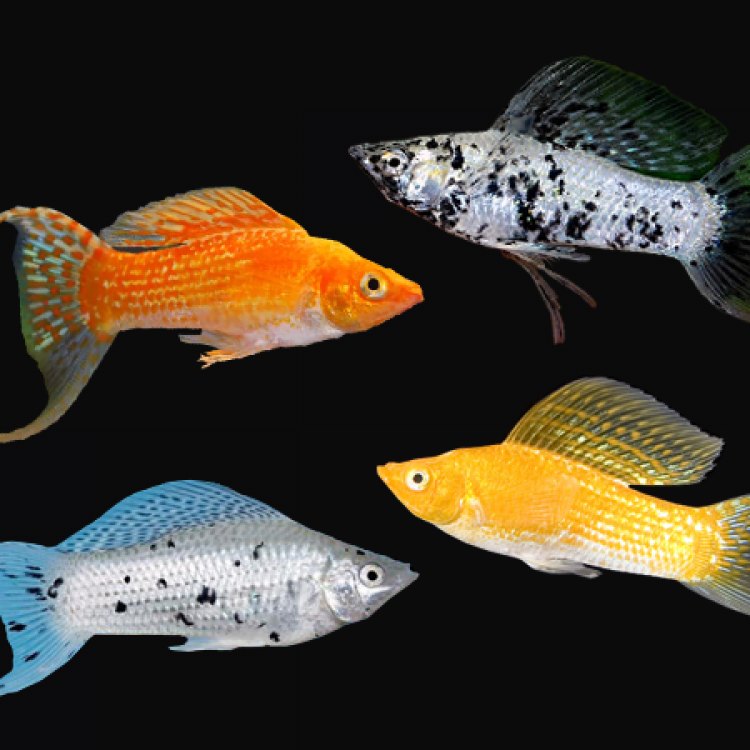
Molly
- Adult Size: 2-4 inches (5-10 cm)
- Average Lifespan: 2-5 years
- Reproduction: Sexual
- Reproductive Behavior: Live-bearing
- Sound or Call: No specific sound or call
- Migration Pattern: Non-migratory
- Social Groups: Can be kept in groups with other peaceful fish
- Behavior: Active and social
- Threats: Predators, habitat destruction, and pollution
- Conservation Status: Least Concern
- Impact on Ecosystem: Control of insect populations and food source for larger fish
- Human Use: Popular aquarium fish
- Distinctive Features: Wide range of color patterns and fin shapes
- Interesting Facts: Mollies are known for their ability to adapt to various water conditions
- Predator: Predated upon by larger fish and birds
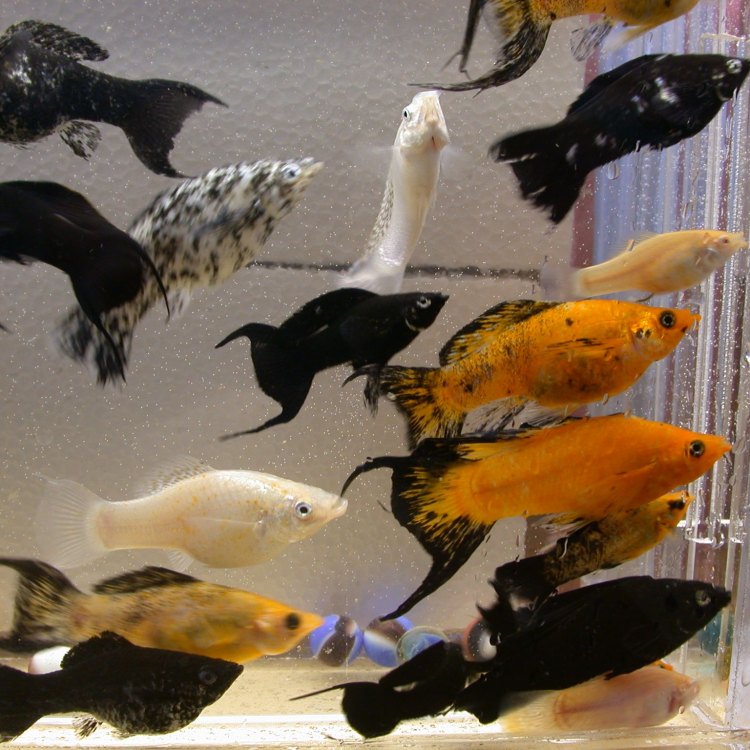
Poecilia sphenops
The Fascinating World of Molly Fish
The Molly fish, scientifically known as Poecilia sphenops, is a popular and beloved member of the fishkeeping community. These small and lively fish have captured the hearts of many aquarium hobbyists with their colorful appearances and active social behaviors. In this article, we will delve deeper into the world of Molly fish, discovering their unique features, behaviors, and importance in the ecosystem.Adult Size and Average Lifespan
Molly fish are relatively small, growing to an average size of 2-4 inches or 5-10 cm PeaceOfAnimals.Com. This makes them suitable for smaller tanks and ideal for beginners looking to start their first aquarium. However, don't let their small size deceive you, as these fish are incredibly active and entertaining to watch.
In terms of their lifespan, Mollies can live up to 2-5 years on average. However, with proper care, they can live even longer, with some living up to 7 years. This may seem like a short lifespan compared to other fish species, but their colorful and lively personalities make every moment with them worth it.
Reproduction and Reproductive Behavior
Mollies are sexual reproducers, meaning they require both male and female individuals for reproduction. However, molly fish have a unique reproductive behavior known as live-bearing. This means that instead of laying eggs, the female Molly gives birth to live fry (baby fish). This fascinating process is called ovoviviparous reproduction and is common among various live-bearing fish species Man Of War Jellyfish.
A female Molly fish can produce between 20-100 fry in a single birth, making them highly efficient breeders. It is essential to provide enough space in the tank for the fry to grow, or they may become prey to their parents or other fish in the tank.
Sound or Call and Migration Pattern
Unlike some other fish species that produce sound to communicate, Molly fish are generally silent creatures. They do not have a specific sound or call that they use to communicate with each other. Instead, they rely on visual cues and body language to communicate within their social groups.
In terms of migration, Molly fish are non-migratory, meaning they do not move from one location to another seasonally. They are primarily found in freshwater bodies such as streams, rivers, and lakes in Central and South America.
Social Groups and Behavior
Mollies are highly social and can be kept in groups with other peaceful fish species. They are peaceful and non-aggressive, making them suitable tank mates for other small fish such as guppies, platies, and tetras. However, it is essential to avoid keeping them with larger or aggressive fish, as they may become targets for bullying or predation.
Molly fish are active and playful, constantly swimming and exploring their surroundings. They also have a strong preference for algae, making them excellent additions to tanks with live plants. However, they may also eat small insects and worms, making them omnivorous in nature.
Threats and Conservation Status
Unfortunately, like many other aquatic creatures, Molly fish face various threats in their natural habitats. These include predators such as larger fish and birds and human-caused threats such as habitat destruction and pollution. Overfishing for the aquarium trade is also a concern, as it can deplete wild populations of Molly fish.
Despite these threats, the Molly fish has been assessed as "Least Concern" in terms of conservation status by the International Union for Conservation of Nature (IUCN). However, it is essential to continue monitoring and protecting their natural habitats to ensure their survival in the wild.
Impact on Ecosystem and Human Use
Molly fish play a critical role in the ecosystem, primarily through controlling insect populations and providing a food source for larger fish. They are efficient algae eaters, helping to keep aquatic environments clean and balanced. They also serve as prey for larger fish, contributing to the food chain in freshwater systems.
In terms of human use, Molly fish are incredibly popular in the aquarium trade. Their vibrant colors and active behaviors make them highly sought after by hobbyists. They are relatively easy to care for, making them ideal for beginners, and their adaptability to various water conditions makes them suitable for a wide range of tanks.
Distinctive Features and Interesting Facts
One of the most notable features of Molly fish is their wide range of color patterns and fin shapes. These unique colorations and patterns are a result of selective breeding within the aquarium trade, resulting in various color variations such as black, white, orange, and even iridescent shades.
Additionally, Mollies are known for their ability to adapt to various water conditions, which is why they are often recommended for beginners. They can thrive in a wide pH range, although they prefer slightly alkaline water. They are also hardy fish, meaning they can tolerate a wide range of water temperatures and do not require extensive maintenance.
Predators of Molly Fish
Unfortunately, Molly fish are also preyed upon by various predators in their natural habitats. These include larger fish such as larger cichlids, catfish, and predatory birds. In the aquarium trade, they may also become prey to aggressive or territorial fish in the tank.
It is essential to provide plenty of hiding spots and adequate tank space for Molly fish to avoid predation. In larger tanks, it is also advisable to have a mix of male and female fish to prevent aggressive behavior and potential harm to the females.
In conclusion, Molly fish may be small in size, but they pack a punch when it comes to their unique features and impact on the ecosystem. These active and social creatures make wonderful additions to aquariums and are sure to captivate anyone who has the pleasure of owning them. Additionally, it is crucial to continue protecting their natural habitats to ensure that future generations can also enjoy the beauty and diversity of these captivating fish.
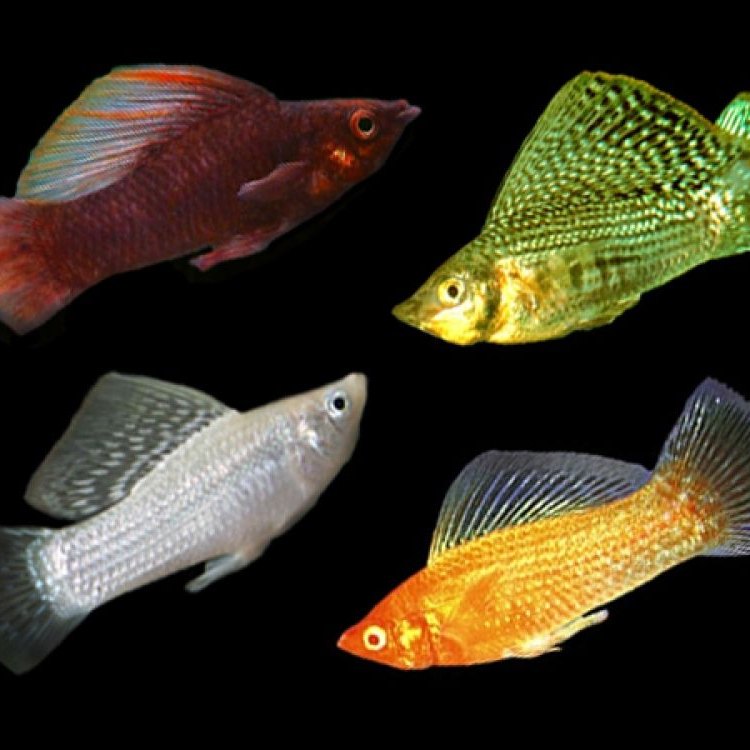
The Marvelous Molly: A Dive into the World of the Poecilia sphenops
Disclaimer: The content provided is for informational purposes only. We cannot guarantee the accuracy of the information on this page 100%. All information provided here may change without prior notice.



